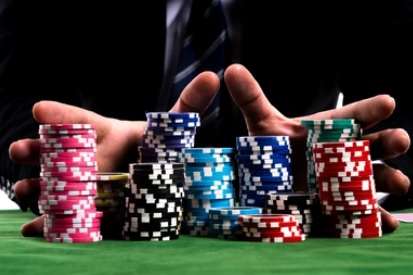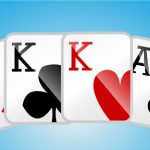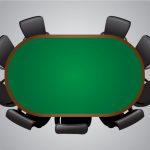I think I just had a really cool epiphany.
Danny and I just watched the new movie 21 tonight (meh). Obviously, when two poker players see that movie there is going to be some gambling discussion afterwards. One thing lead to another and I brought up the subject of why decent poker players only have small edges on each other, why the difference between great and good players at 3/6 and 5/10 may only be a couple of big bets per 100 hands. The conversation lasted a bit. We both agreed that it made sense, but Danny concluded by saying, "In terms of calling bets, you only need to be right like 30% of the time to breakeven, so you’re never gonna lose that much. There are only a few places you really lose a lot of money. Like when you call a bet when you’re never winning ever."
I went back to my room, played a bit of poker and then realized something about that statement.
Let’s say you get into a river spot against an abc TAGG. You check, he bets, and you decide that if you check/shove he will fold 60% of the time (which with the pot size and bet size dictates that this would be a good play). However, you will take this line with any other hand than a bluff at this present moment. This means that when he folds you win all the money, and when he calls, you lose all the money.
Which is ok if he really folds 60%. But poker is an inexact game, and this will probably be a marginal play at best.
So let’s get to the same situation, but instead of never having anything but a bluff in your range, you have the nuts 30% of the time. Now, if he folds you still win all the money, but if he calls, you are essentially winning 30% of the pot since you have the nuts 30% of the time. So now you don’t even need him to fold 60% of the time anymore, and even if he does your play is even more +EV! It’s kind of like the difference between semi bluffing and pure bluffing.
This my friends is another way of looking Shania, and the reason it’s so important. When I first looked at Shania, I thought, "Yeah yeah, if I bluff people will pay me off blah." I didn’t really get it, but it is a powerful tool. When implementing Shania correctly, you can almost never make a big mistake because you always have part of your range that will win the pot (therefore giving you some equity on your bluffs).
Conversely, you want to manipulate your opponents into making either bets, raises or calls where they have little this Shania equity. Because the only way you can really crush a player is if they make a big mistake, and this big mistake will only happen when they perform an action in a spot (whether it be a bet, raise or a call) that is never going to win.
Here’s one basic rule I can think of that could come out from this:
Shania rule #1: Never bluff in a spot where you will never show up with a made hand, unless you feel the EV of this play in a vacuum is significantly large.
Tell me what you think!
Submit your review | |









